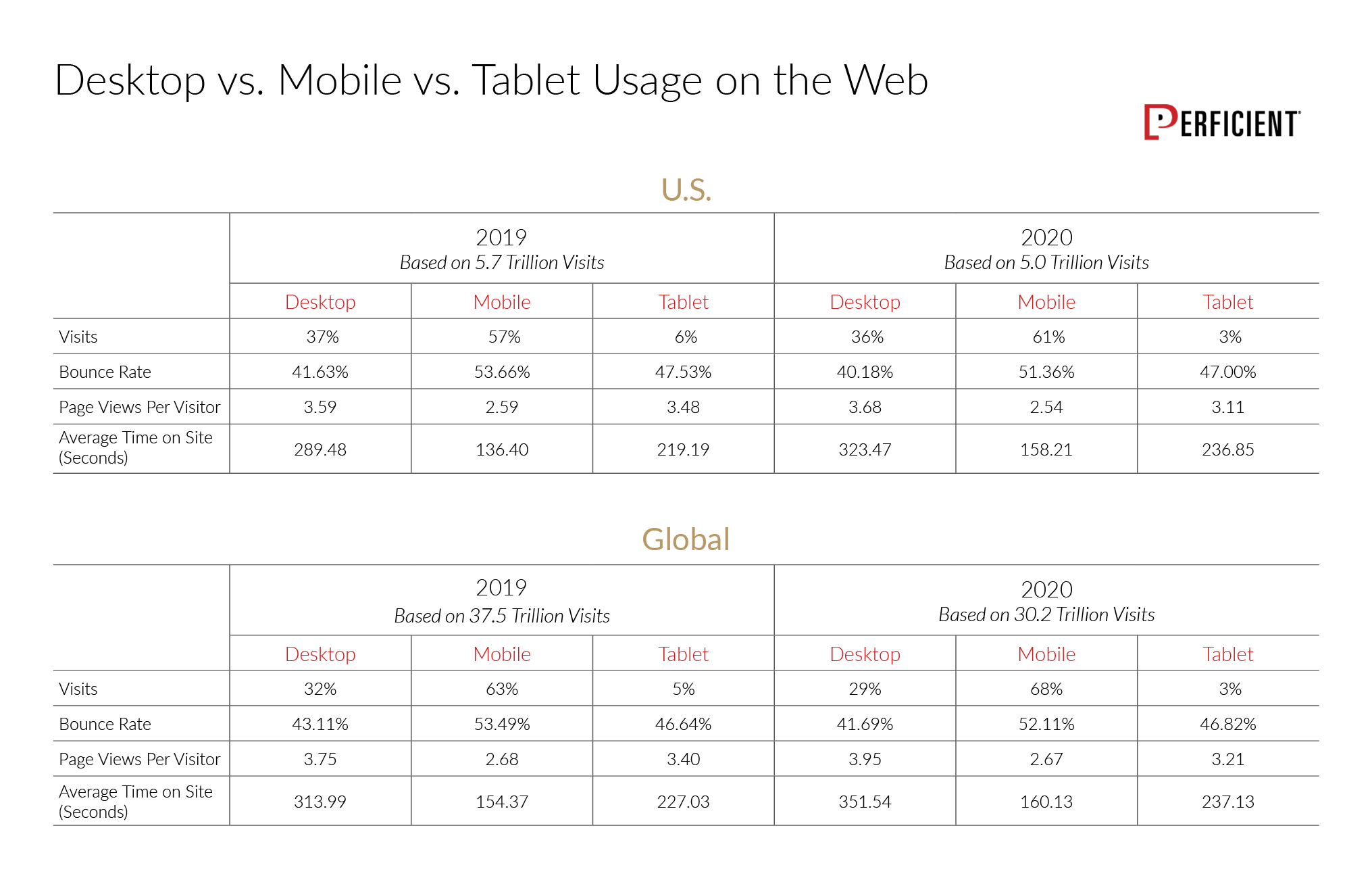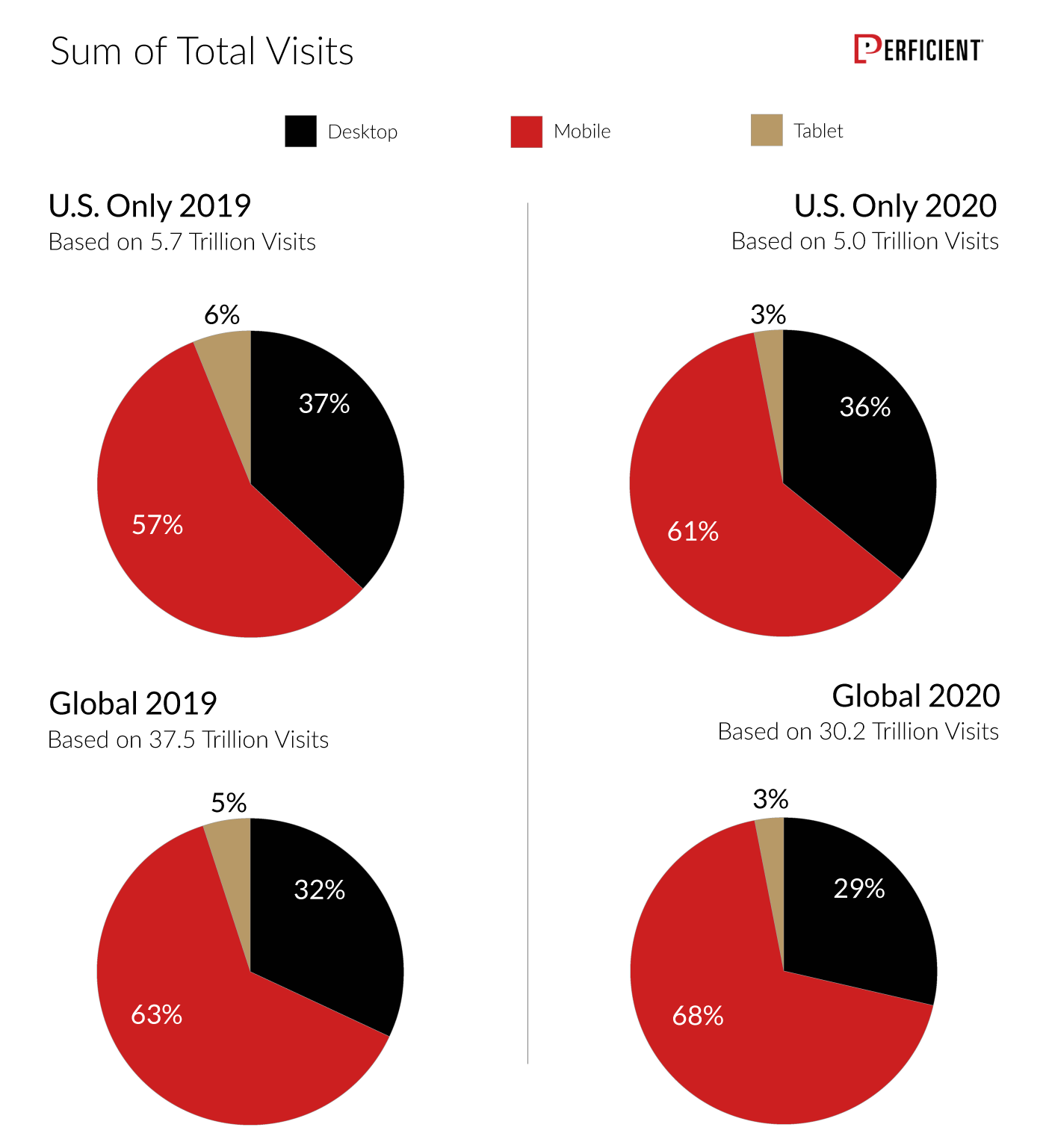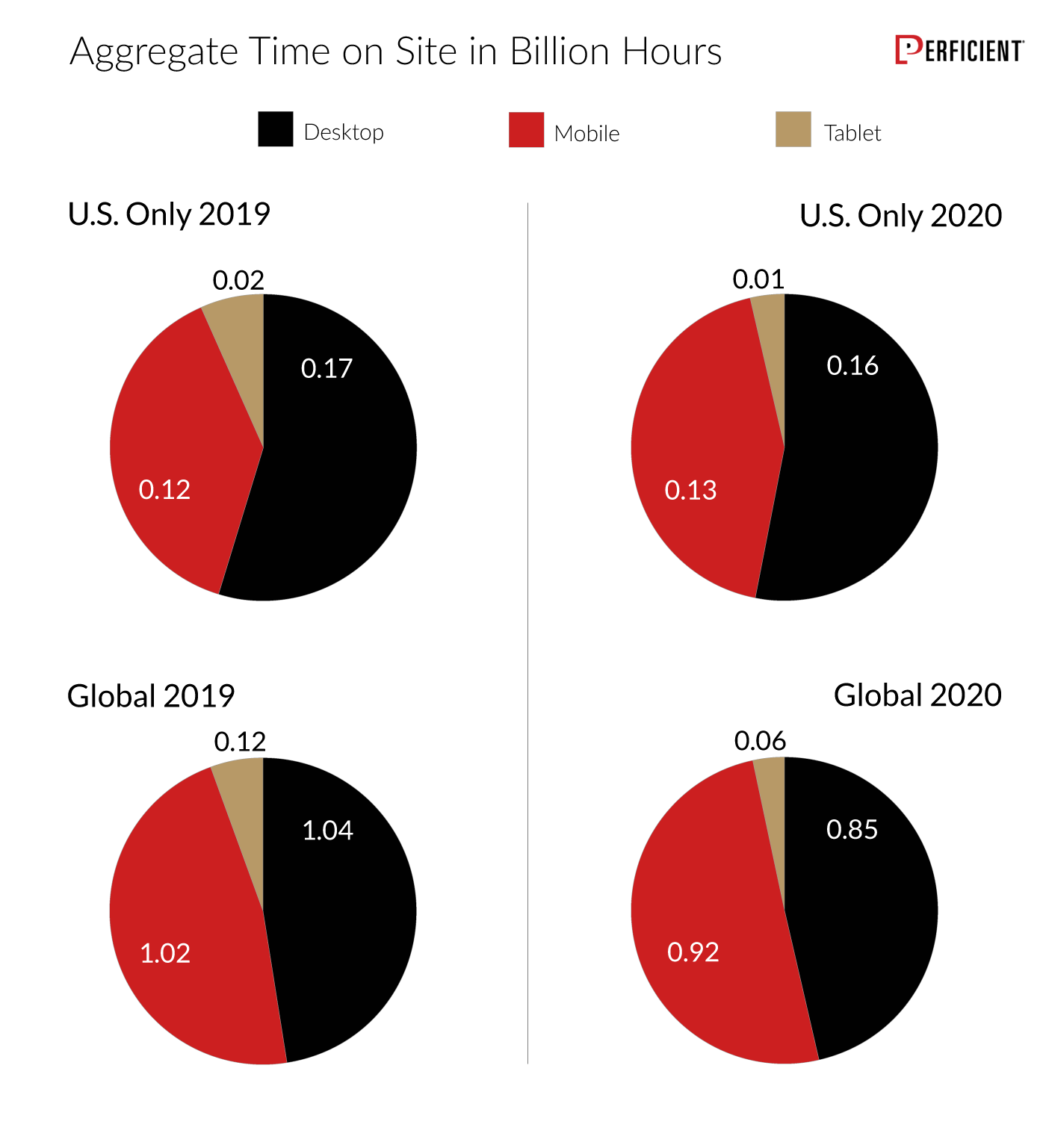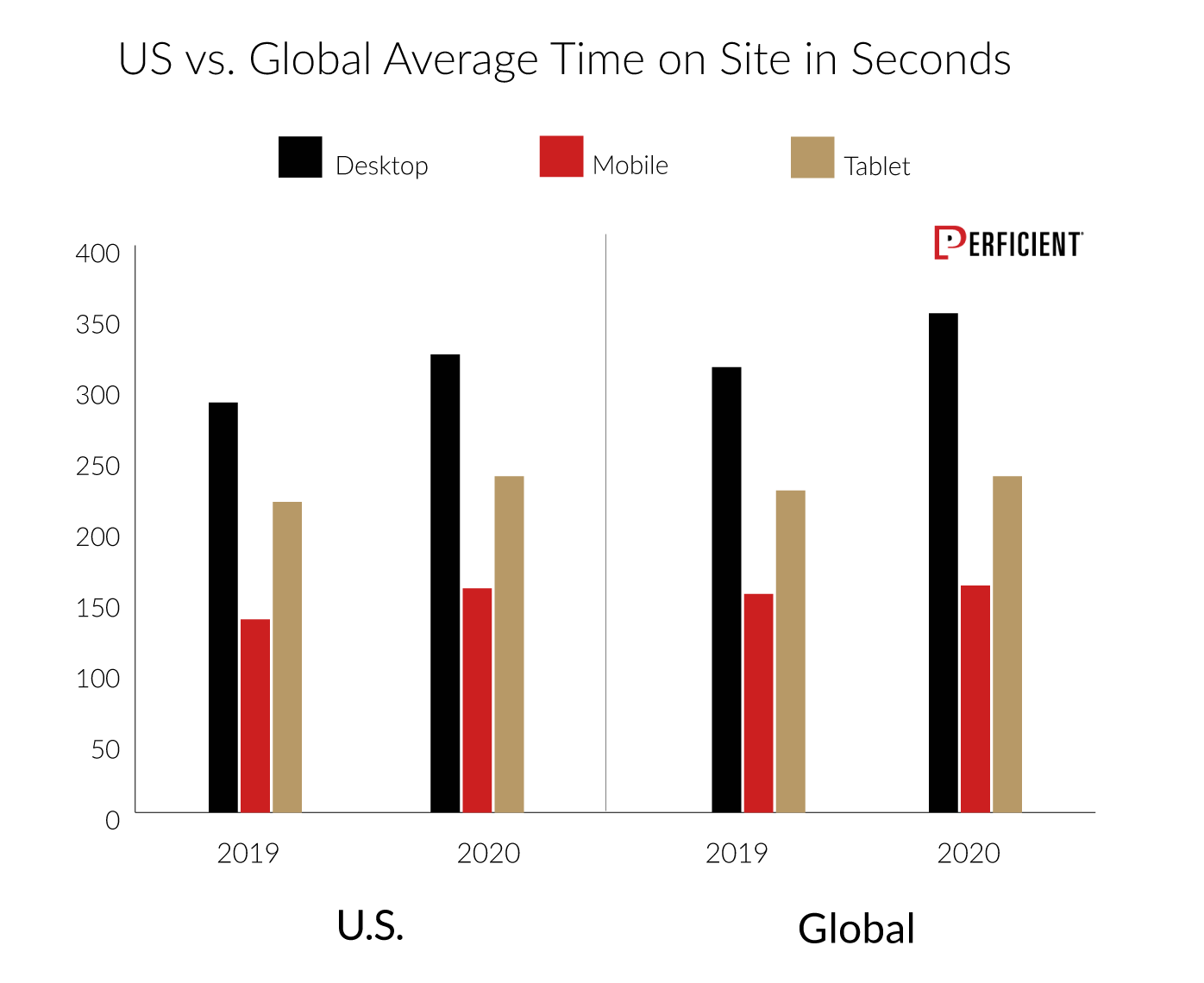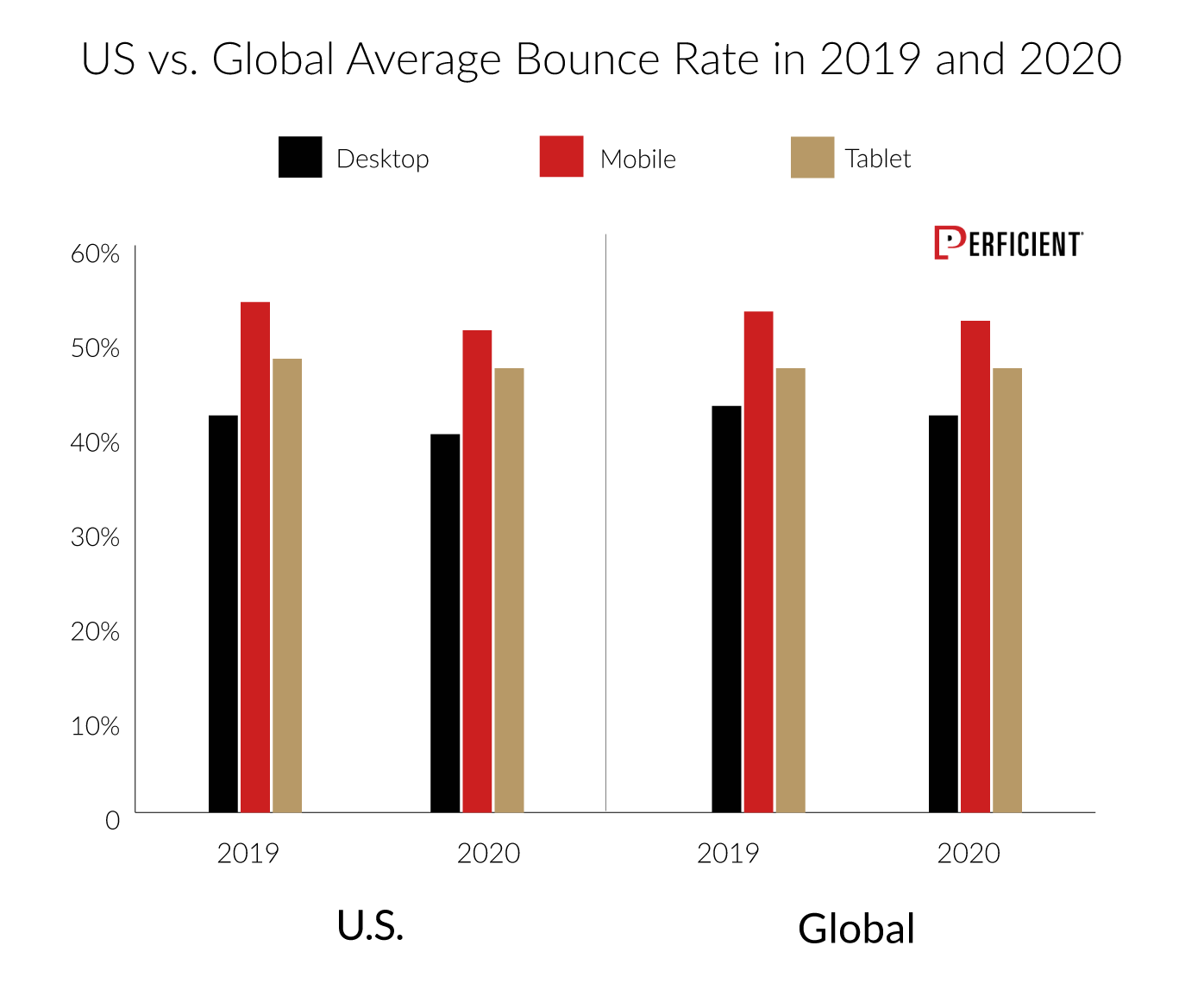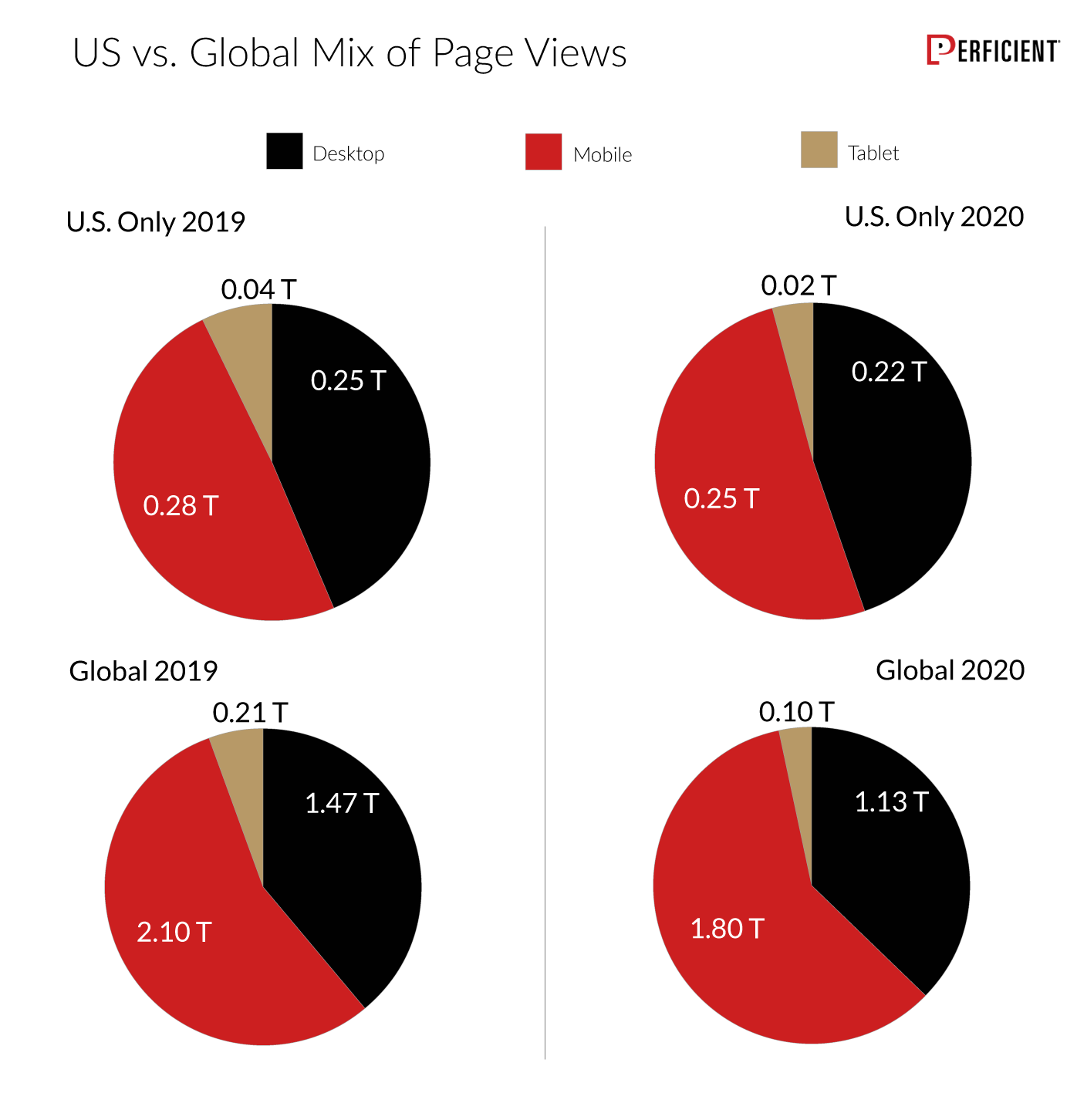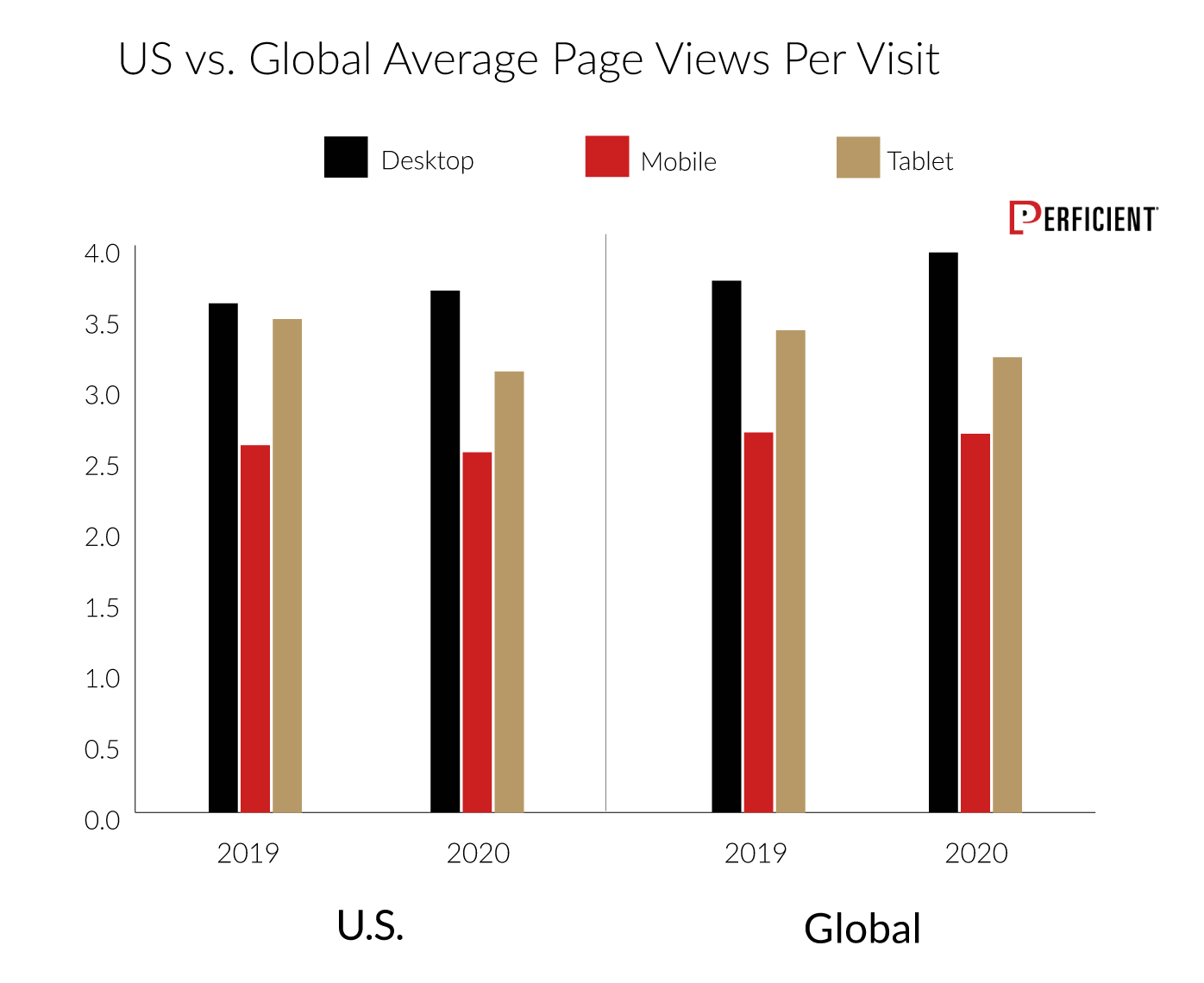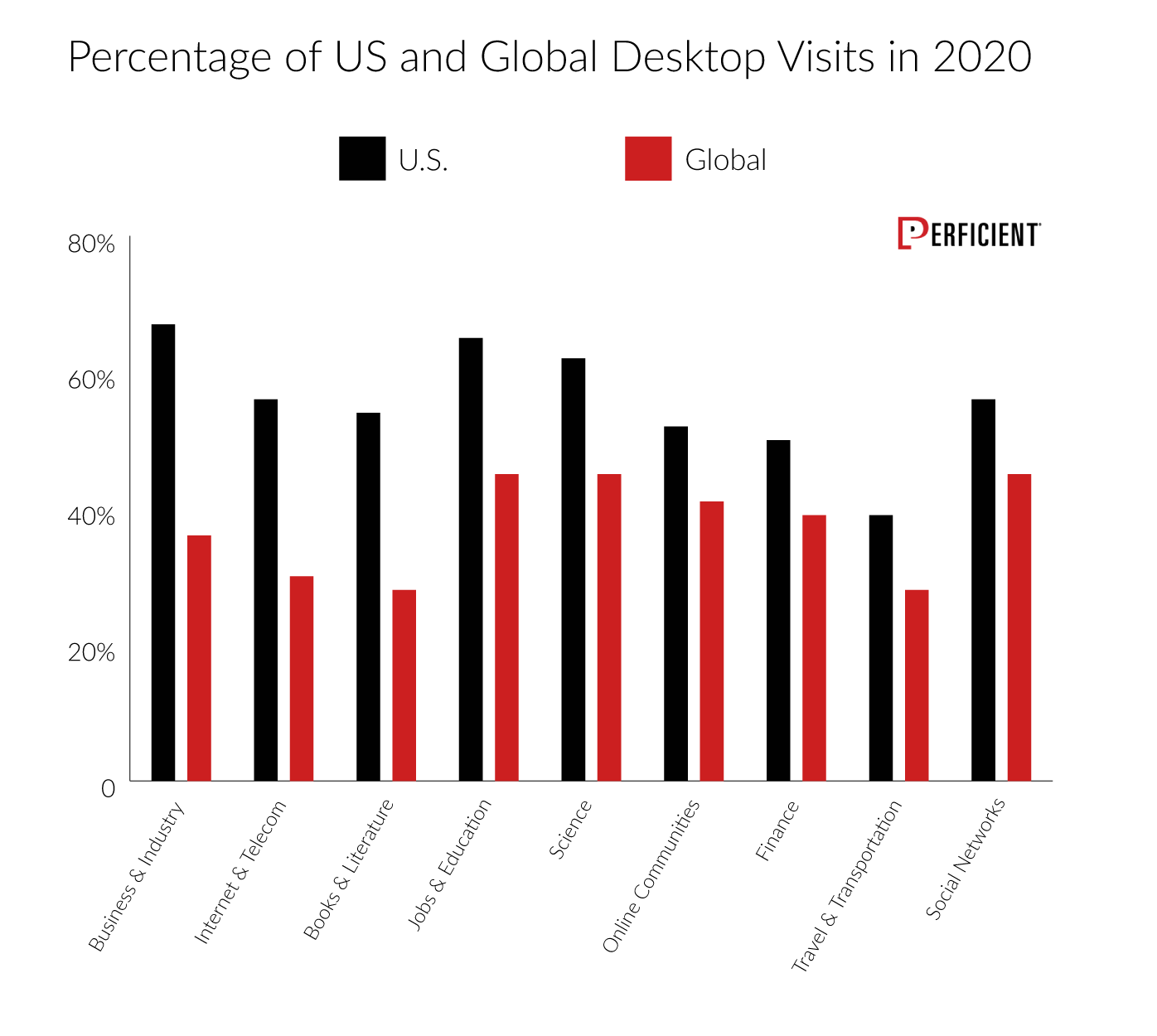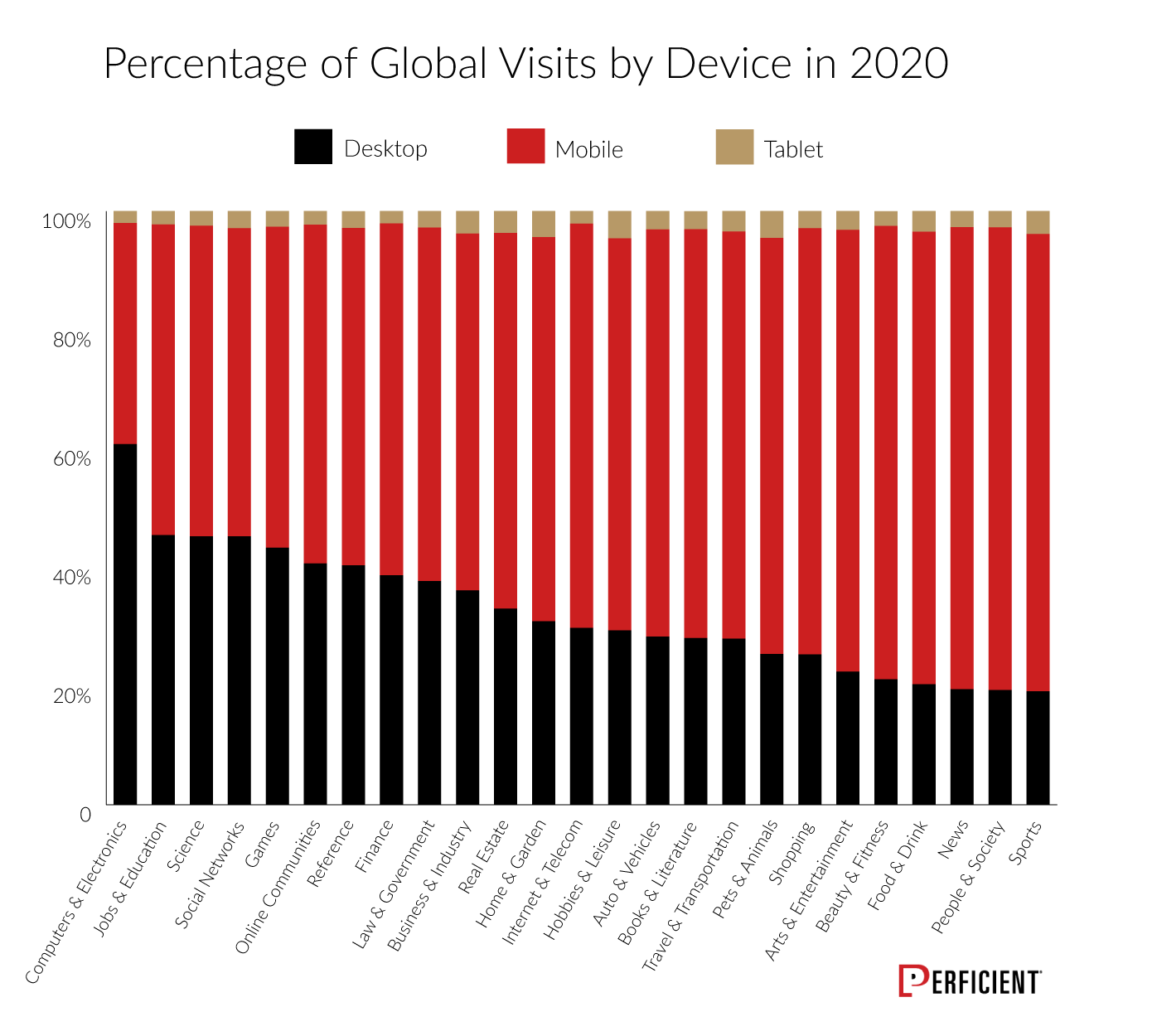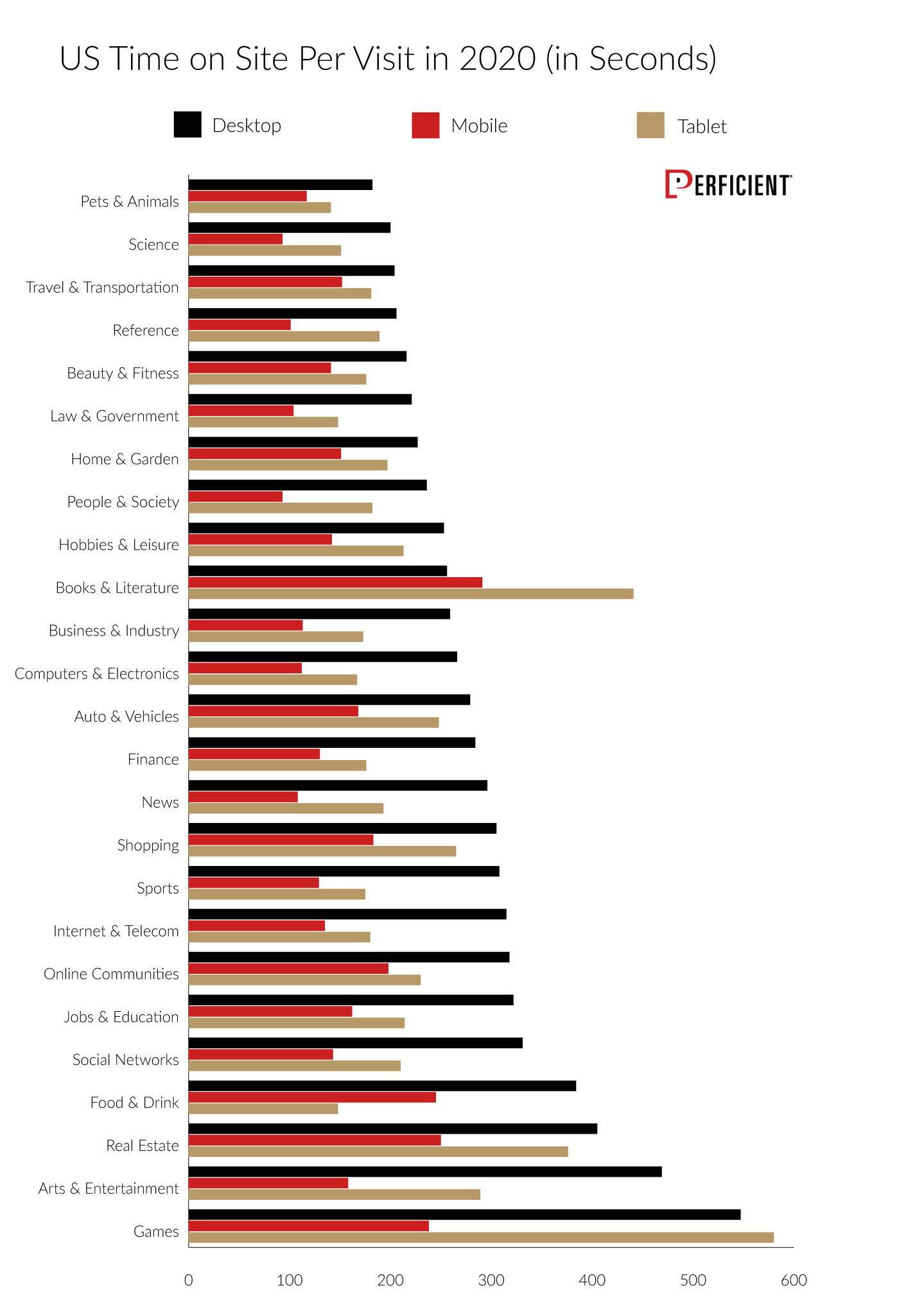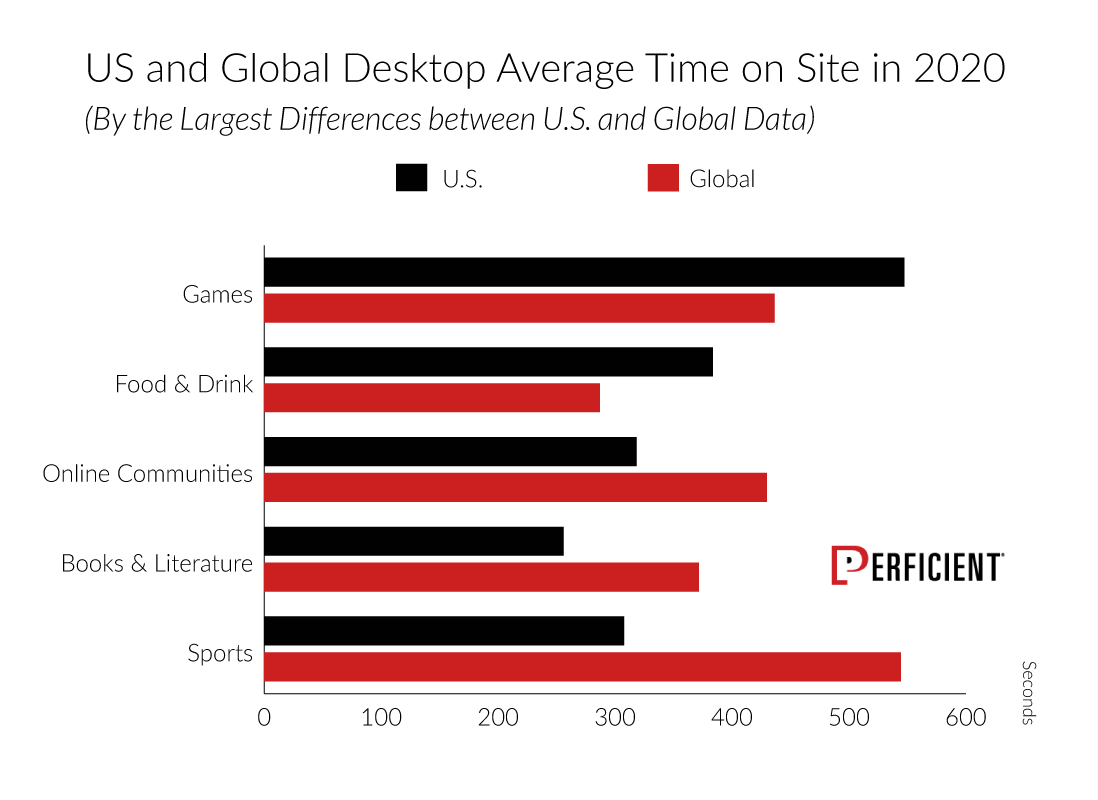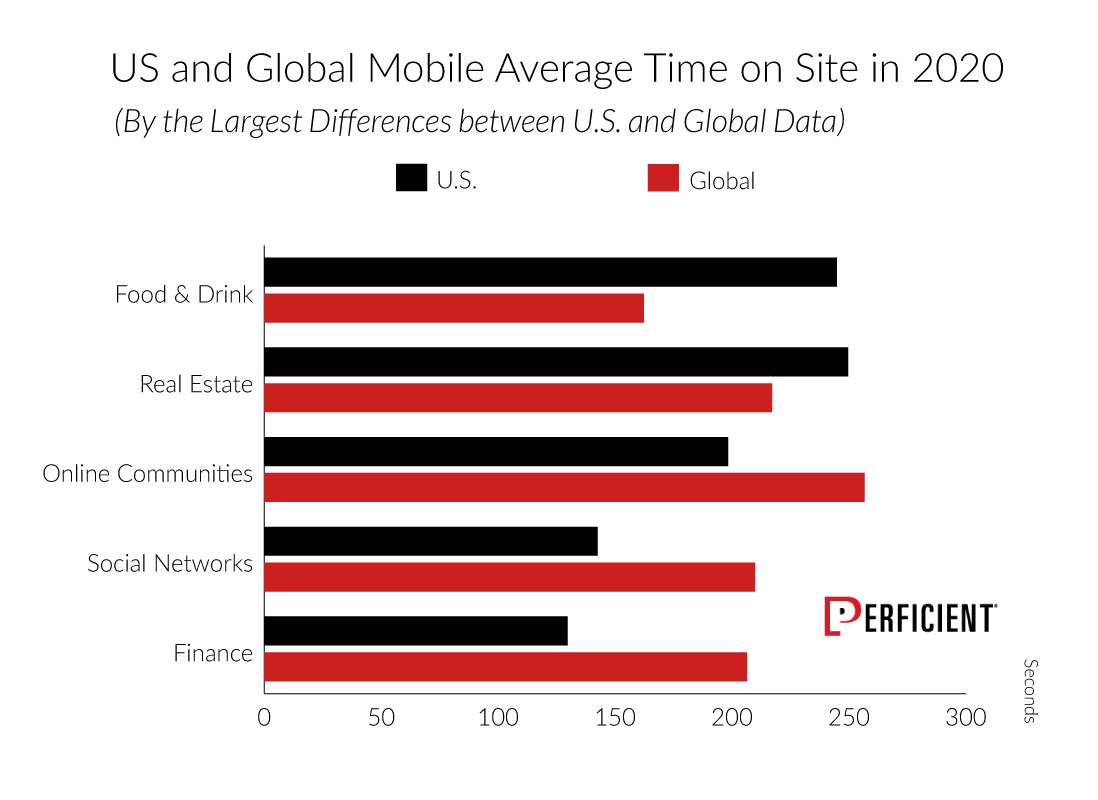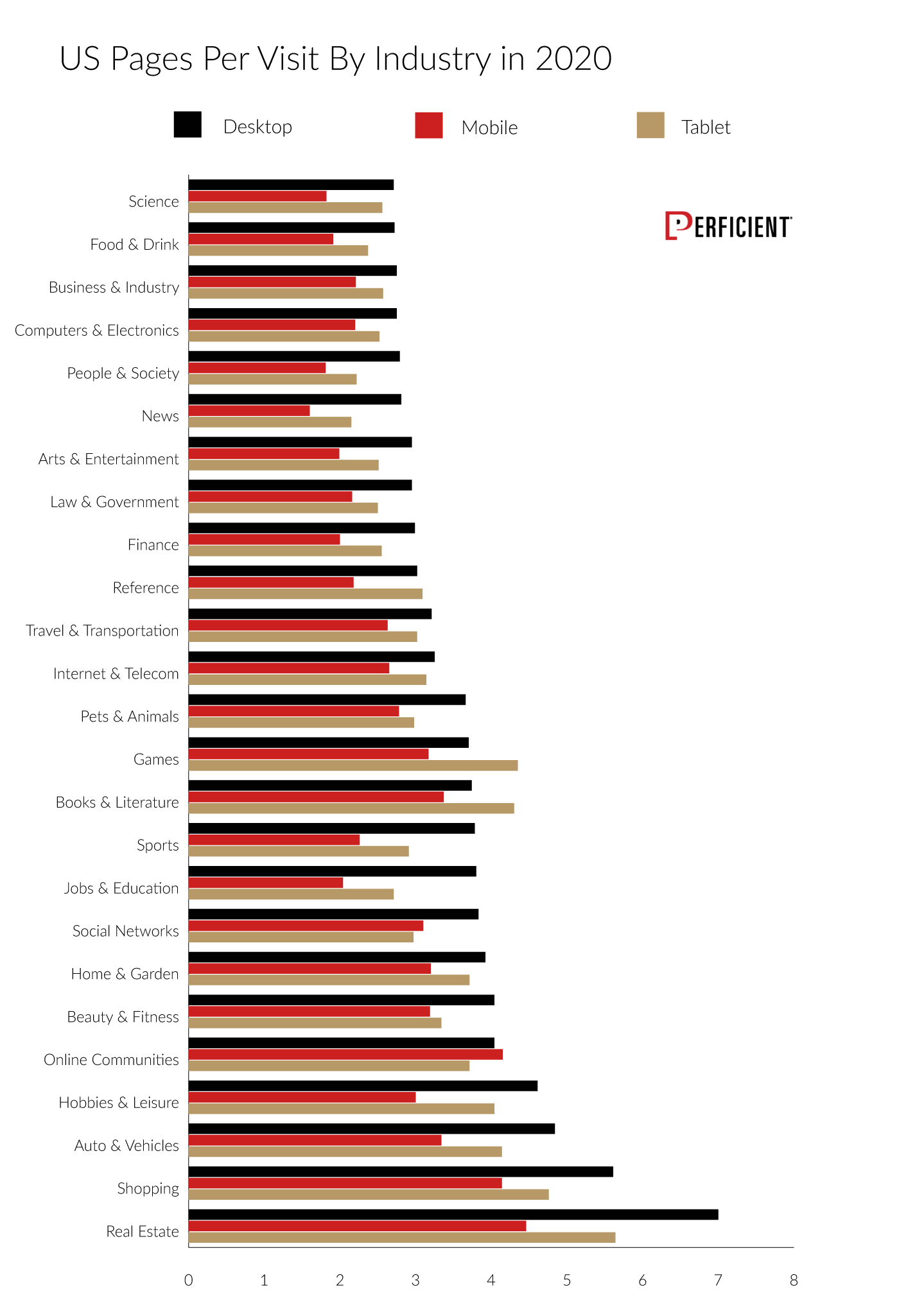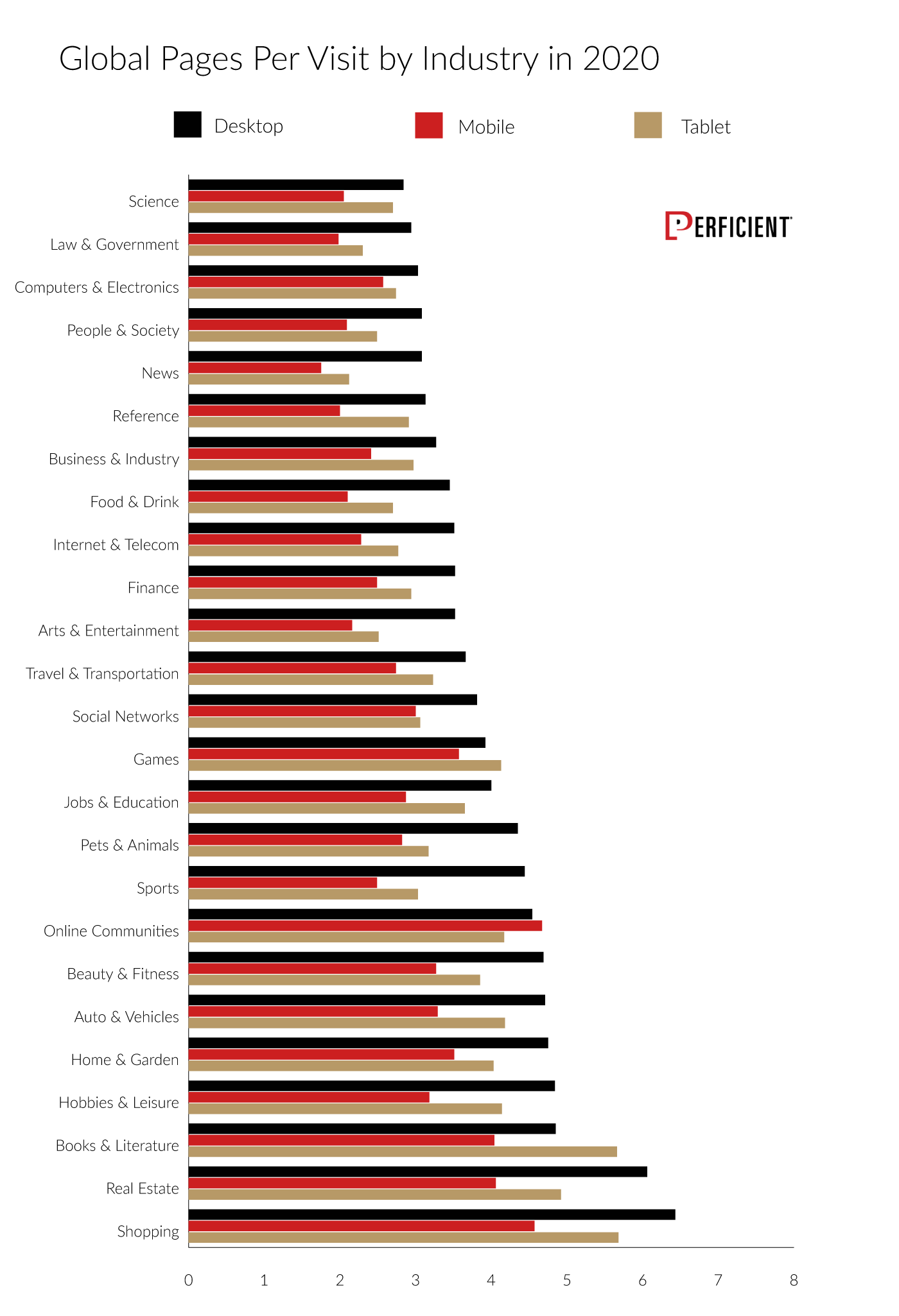Mobile vs. Desktop Usage in 2020

Where Is the Mobile vs. Desktop Story Going?
This study is a comprehensive review of mobile versus desktop usage on the web. In this year’s study, we compare 2019 and 2020 traffic patterns in the U.S. and globally. We also include tablet usage stats.
The data in this study was pulled from Google Analytics’ Benchmarking feature, which provides aggregated industry data from companies that share their data.
Mobile devices drove 61% of visits to U.S. websites in 2020, up from 57% in 2019. Desktops were responsible for 35.7% of all visits in 2020, and tablets drove the remaining 3.3% of visitors.
Globally, 68.1% of all website visits in 2020 came from mobile devices—an increase from 63.3% in 2019. Desktops drove 28.9% of visits, while 3.1% of visitors came from tablets. However, desktop devices remain very important, as they drove 53.3% of total time on site in the U.S. and 46.4% of total time on site globally.
The following table offers an in-depth overview of mobile versus desktop usage in 2020. Tablet data is also included.
We first began publishing this study in 2016. Prior years studies are available here:
Aggregated Stats: Desktop vs. Mobile
The most commonly talked-about stat is the number of visits that come from mobile devices. The following chart outlines the percentage of mobile versus desktop visits websites received in 2019 and 2020.
The immediate observation shows a greater percentage of mobile usage when comparing the global and U.S. view. These findings are not surprising, considering how many countries primarily use mobile devices. Even in the U.S. alone, mobile visits are significantly greater than desktop visits.
When we look at time on site, however, we see a different story:
Here, we see that the total aggregate time on site for desktop exceeds mobile devices, even in the global view. Simply put, larger screens and keyboards offer greater convenience when conducting in-depth research, pursuing entertainment, and for many other activities compared to mobile devices.
Based on this, we’d expect the average time on site per session for desktop devices to be significantly longer than mobile devices:
Our suspicion is correct—desktop sessions are roughly twice as long as mobile. This pattern is further confirmed when we compare the bounce rate for desktop versus mobile devices:
As expected, we see higher bounce rates on mobile devices. A bounce is defined as a session where the user visits only one page, but this doesn’t necessarily mean that these are low-value pages.
For example, sessions on mobile devices may include users who are literally mobile and satisfying an immediate need, such as researching directions in a new city or looking up a phone number or an address. In contrast, people may be more likely to use desktop if they want to read several pages or conduct in-depth research.
Next, let’s look at mobile versus desktop total aggregate page views in the U.S. and globally:
The aggregate page views favor mobile devices, largely because the percentage of visits is higher. We see a different story when comparing page views per visit for desktop versus mobile devices:
The page views per visit are highest for desktop. Interestingly, tablet page views per visit are higher than mobile devices (but lower than desktop), likely because tablets are heavily used for reading and entertainment.
Mobile's share of total visits continues to grow at a steady pace, but desktop devices still have the most total time on site.
Stats by Industry Category
This next section takes a deep dive into usage patterns across desktop and mobile devices. We’ve broken it down into market segments, in both U.S. and global views.
Let’s look at desktop first:
Here we see that desktop usage is greatest in the U.S. in every category. The disparity between U.S. and global in the business and industry category is an interesting pattern—desktop usage in the U.S. is nearly twice that for the global view, whereas the gap in desktop usage between the U.S. and global in the travel and transportation category is quite small.
The next chart compares mobile, desktop, and tablet usage in the U.S., broken out by market category:
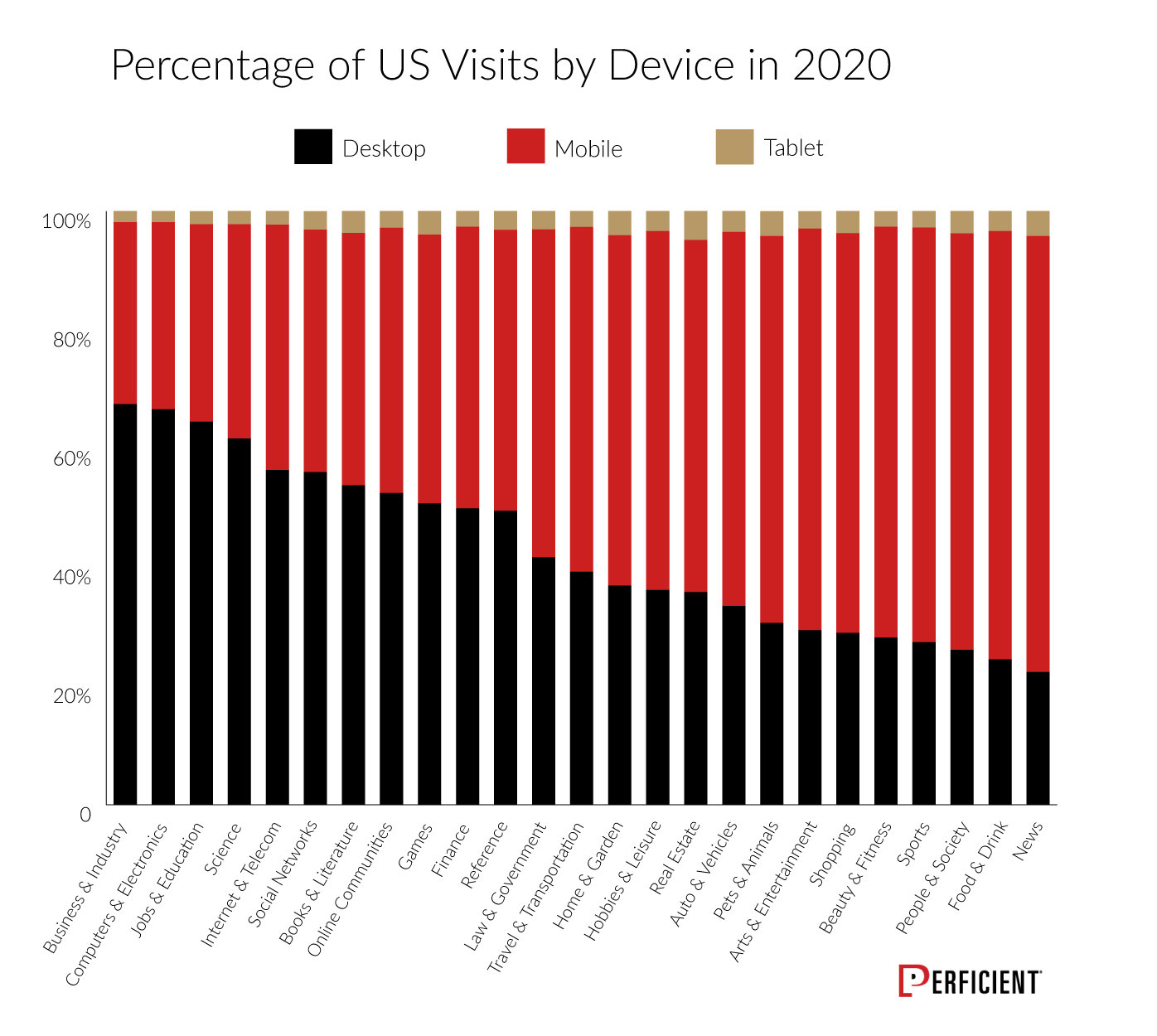
This provides a quick view into mobile-dominant market categories, such as news, food and drink, people and society, sports, beauty and fitness, shopping, and arts and entertainment. The categories are listed in descending order.
However, desktop devices still lead many areas, including business and industry, computers and electronics, jobs and education, science, internet and telecom, and social networks (also listed in descending order).
When comparing global visits on mobile, desktop, and tablet, the percentages tell a different story:
Mobile leads in visit percentage in every market category except computers and electronics. Interestingly, social networks have a relatively high percentage of desktop visits in the global and U.S. data views.
The following chart shows time-on-site stats by market category across different U.S. markets:
Here, tablets show a strong lead in books and literature and games. Mobile time on site trails desktop in every category except books and literature. The metrics show similar patterns when viewed from a global perspective:
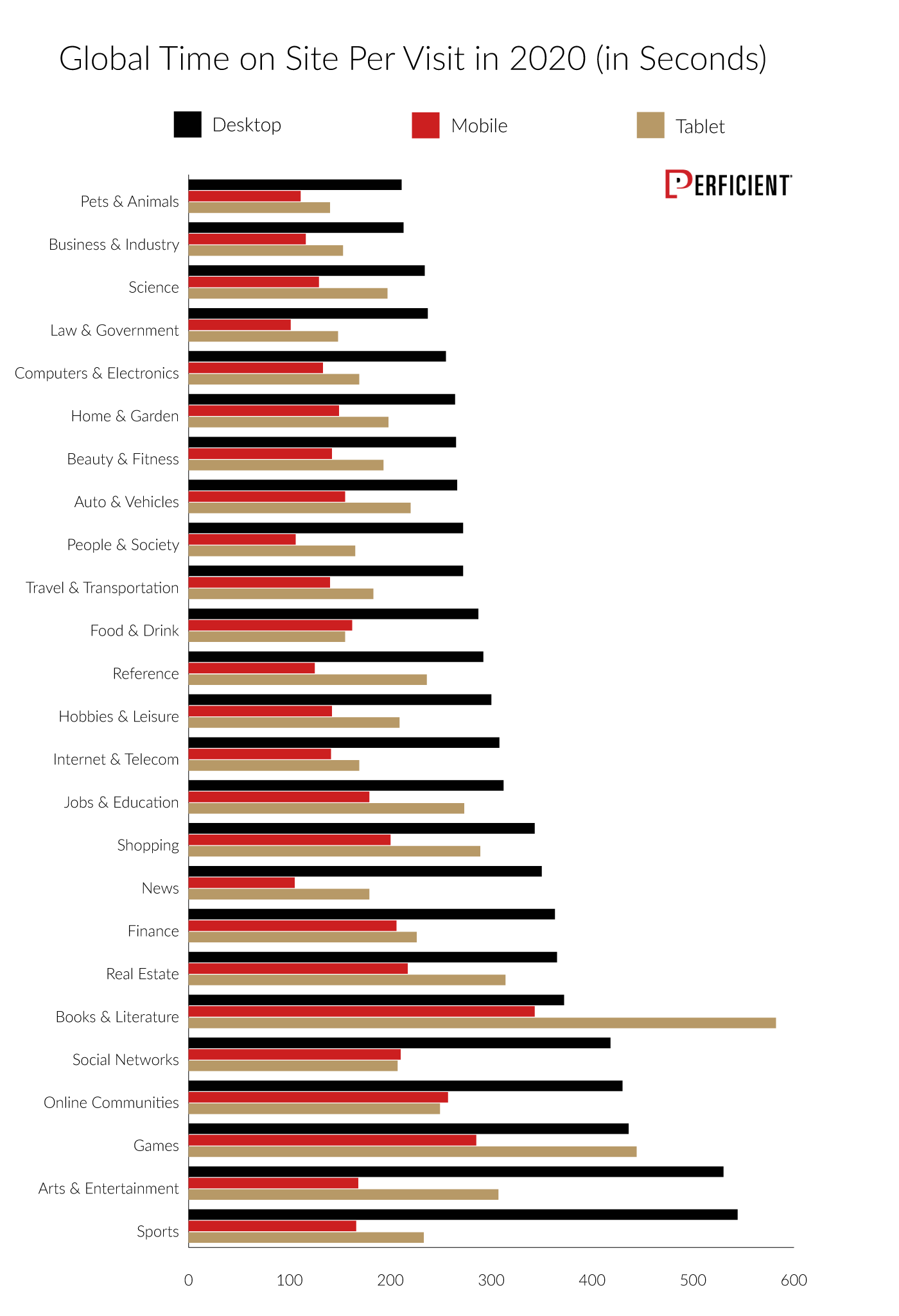
Globally, tablets still lead in books and literature and games, and desktop still leads in every other category. However, as expected, we see a much stronger showing from mobile devices.
Interesting differences also exist when comparing desktop average time on site for U.S. and global users:
This data shows that Americans using desktop devices spend more time focused on games and food and drink, but outside the U.S., users spend more time on sports, books and literature, and in online communities.
A similar comparison with a focus on mobile devices also reveals some differences:
Americans still spend more time on food- and drink-related topics, but real estate is also a leading category. Global users spend notably more time than Americans in online communities and on social networks and finance.
Bounce rates by category in the U.S. show some interesting data points, as well:
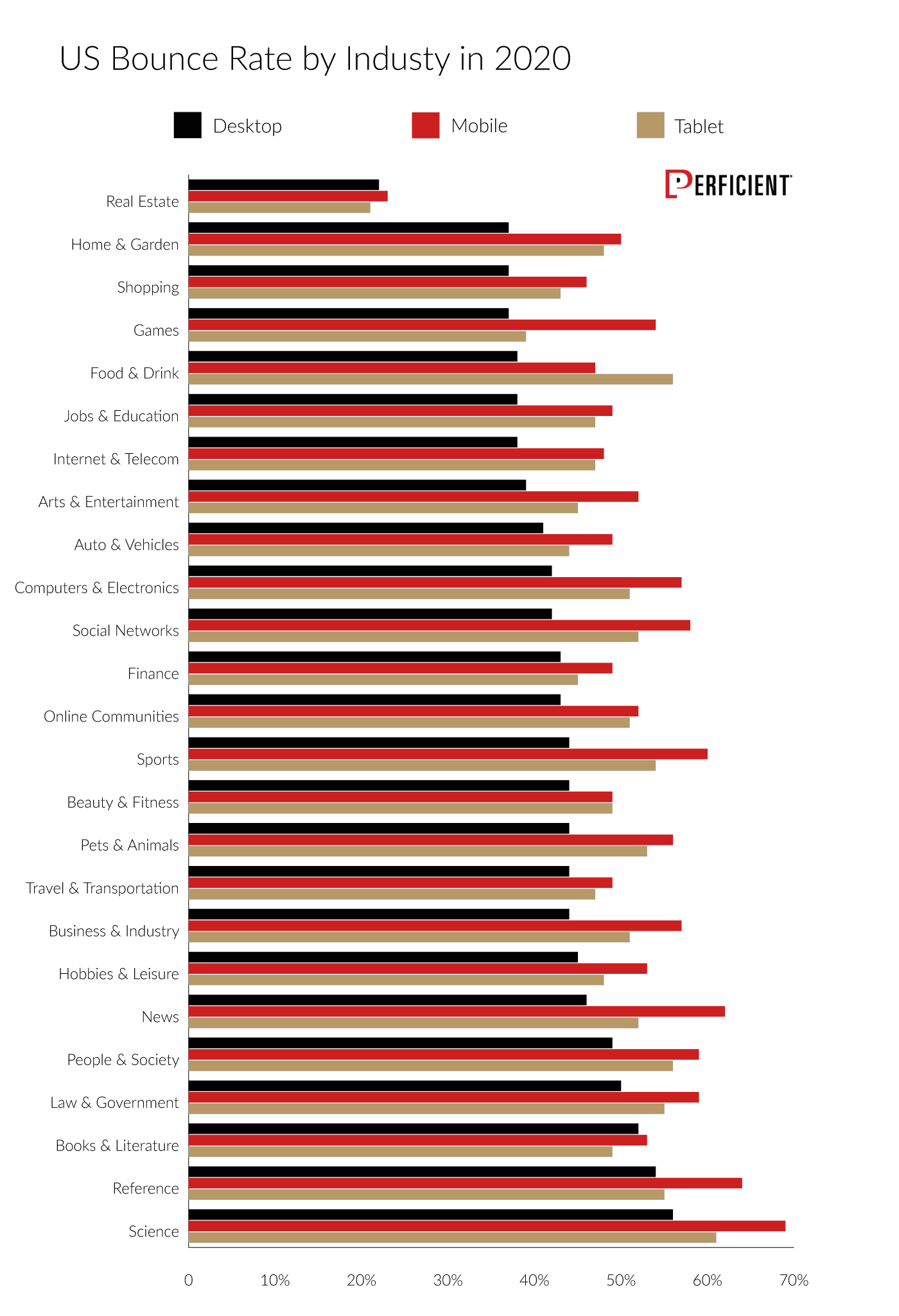
Next, let’s look at global bounce rates by industry for mobile, desktop, and tablet:
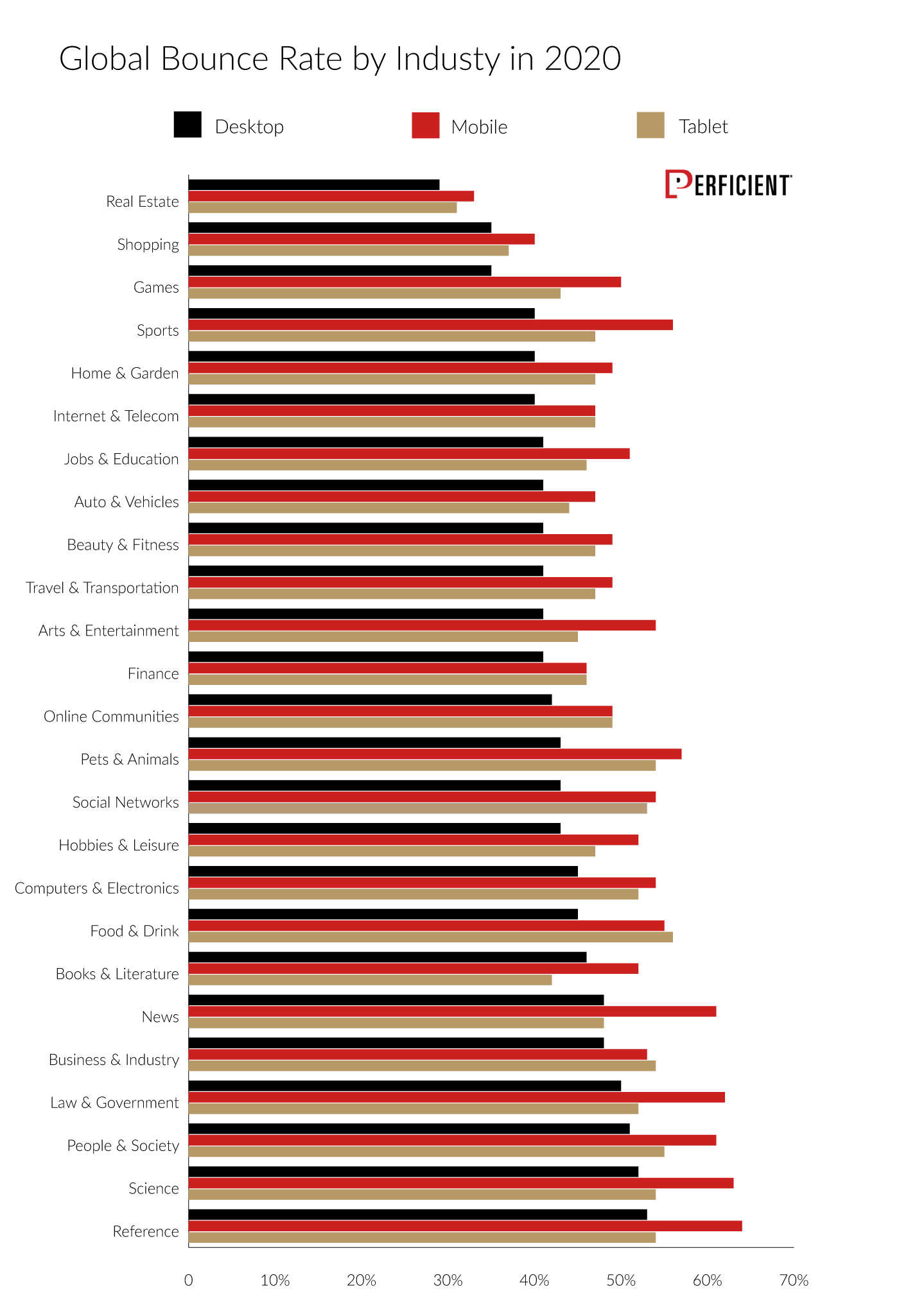
Similar insights appear when looking at the U.S. data for pages per visit:
Desktop has the most pages per visit, except in games, books and literature, and online communities. Mobile scores highest for online communities, and tablet has the most pages per visit for the other two categories.
Our final chart considers the pages-per-visit data for global industries:
Global data is the same as the U.S. data—tablets lead games and books and literature, and mobile leads online communities.
Mobile user interfaces are improving, and users are getting more accustomed to them. Being mobile friendly is important in all industries—it’s the largest source of traffic in nearly all of them.
Four Takeaway Recommendations
How can you use this data to inform your digital marketing strategy? Here are four of our top observations and ideas.
Mobile Experiences Are Continuing to Improve
Mobile-user interfaces are improving, and users are becoming accustomed to them. Being mobile friendly is important in all industries, as it’s the largest source of traffic for almost all of them.
Use the data to learn where your industry users are coming from. Desktop remains the primary source of traffic in some markets. Further, use your analytics to determine which types of devices are the source of most of your conversions. For example, your visits may be coming from mobile devices, but your conversions may be happening via desktop devices.
Consider designing your mobile site before you design the desktop site. Instead of coding your desktop site and then writing style sheets to shrink it into a smartphone form factor, design your mobile site first. Then, you can figure out how to leverage the larger screen real estate available on a desktop platform as a second step.
Important note: We don’t say this because desktop is dead—it’s still very important. But, it’s far easier to take a mobile UI to the desktop than to take a desktop UI to a smartphone.
Desktop Remains Very Important
Industry data still suggests that most conversions continue to take place on desktop in many industries, so continue to pay attention to your desktop site.
If you’re in an industry where 75% or more of your conversions come from desktop, consider offering mobile users the option to provide contact information, save shopping carts, or implement functionality that allows them to defer the completion of a conversion to a later time (perhaps on a desktop).
The rationale is that users may not want to deal with complicated forms and/or enter their credit card information on a mobile device. Following up lets them come back on a desktop device and convert at a more convenient time. If you’re open to this idea, test it thoroughly first to see which yields better results.
Compare Your Site’s Behavior to Industry Norms
If the average percentage of mobile visitors in your industry is 60%, and your site is at 35%, that may indicate a problem, like a slow mobile site. If a large delta exists between your site and industry norms, take the time to understand why.
Pay Attention to Page Speed
Google’s Core Web Vitals algorithm will go live in May 2021. This new algorithm includes ranking inputs based on:
- First Input Delay
- Largest Contentful Paint
- Cumulative Layout Shift
However, SEO may not be the primary reason to be concerned about your site’s speed. This SEO Mythbusting video that I made with Google’s Martin Splitt explains why.
Why does page speed matter so much then? Google published data says 53% of visits to mobile sites are abandoned if pages take longer than three seconds to load. This data also tells us that the average mobile page takes 19 seconds to load on a 3G device.
While that is stunning, let’s dig deeper and consider the data published by Deloitte Digital. This chart shows the impact of speeding up your page load time by 0.1 second:
The Bottom Line
The bottom line is that users don’t like slow sites. Perhaps more importantly, users love faster-performing sites. That alone is reason enough to focus your attention on speeding things up.
